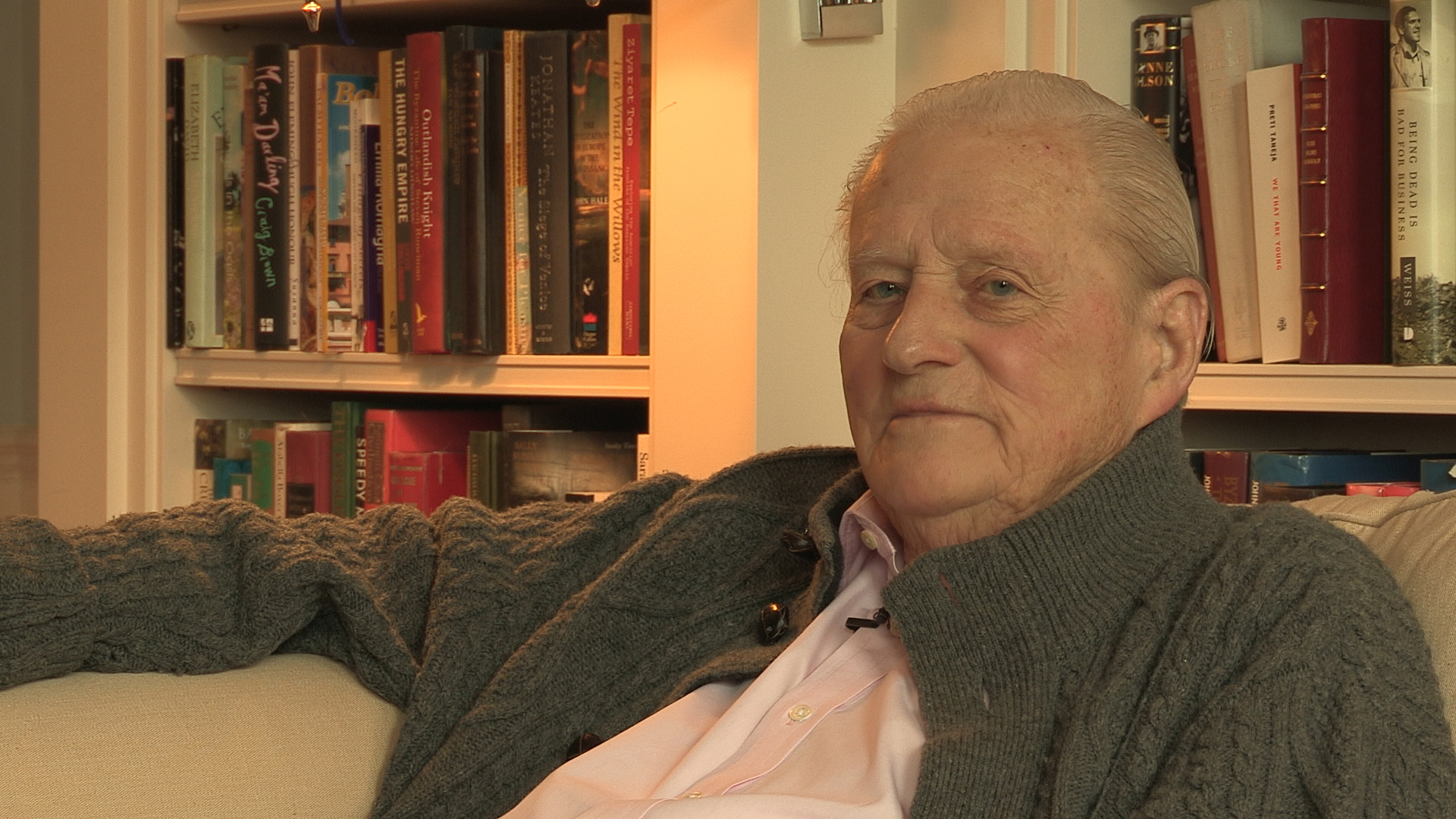NEXT STORY

Setting out to cross the Sahara Desert
RELATED STORIES

NEXT STORY

Setting out to cross the Sahara Desert
RELATED STORIES


|
Views | Duration | |
|---|---|---|---|
| 101. When writing, start at the beginning | 60 | 00:30 | |
| 102. Attempting to gain access to Mount Athos | 45 | 01:36 | |
| 103. A world without women | 47 | 02:10 | |
| 104. The austerity and beauty of life on Mount Athos | 42 | 03:16 | |
| 105. When is Mount Athos like Eton? | 42 | 02:41 | |
| 106. Mount Athos then and now | 41 | 02:12 | |
| 107. Setting out to cross the Sahara Desert | 38 | 04:50 | |
| 108. Camels and camps in the Sahara | 35 | 04:06 | |
| 109. An eventful homeward journey | 40 | 04:32 | |
| 110. Time suspended | 40 | 02:35 |


This is the book that we actually wrote about it. It came out in 1964 or 1965, I think, and it was the first time I ever saw my name on the front cover of a book, you know, and it's full of lovely pictures of the monasteries and I look through it quite often, really, just to remind myself of how beautiful the place was and what a marvellous time we had there. It was... it's still, I gather, going strong. Oddly enough, I had dinner last night with a man who just came back from there. He says it's not quite the same as it was in my day. There are now vast numbers, apparently, of Russian and Bulgarian pilgrims who come along, who are very pilgrimmy, I mean, they appear to be very, very pious. But there are large numbers of them and, I mean, it was the emptiness of the place that was so lovely in my day and I feel it may be getting uncomfortably crowded. On the other hand, he said that the monastic food was now delicious. This I find very, very hard to believe, considering how completely filthy it was in my day and I don’t quite see, either, how the monks have the money to, unless they actually charge nowadays. Perhaps they do, I don’t know. But they certainly didn’t in my day and, you know, inevitably, all those things, they must ultimately change, they must get spoiled, but they are being very firm about the number of people who can go and, theoretically, apparently, your stay is restricted to three monasteries, three nights at three different monasteries. And that's it. Then you're out. Although he did say that, in fact, once you're in, nobody looks at any of your papers and nobody knows how long you've stayed at all, so, in fact, you can stay on forever if you wanted. So anyway, that's... that’s Mount Athos and it's been going for well over a thousand years and long may it last.
John Julius Norwich (1929-2018) was an English popular historian, travel writer and television personality. He was educated at Upper Canada College, Toronto, at Eton, at the University of Strasbourg and on the lower deck of the Royal Navy before taking a degree in French and Russian at New College, Oxford. He then spent twelve years in H.M. Foreign Service, with posts at the Embassies in Belgrade and Beirut and at the Disarmament Conference in Geneva. In 1964 he resigned to become a writer. He is the author of histories of Norman Sicily, the Republic of Venice, the Byzantine Empire and, most recently, 'The Popes: A History'. He also wrote on architecture, music and the history plays of Shakespeare, and presented some thirty historical documentaries on BBC Television.
Title: Mount Athos then and now
Listeners: Christopher Sykes
Christopher Sykes is an independent documentary producer who has made a number of films about science and scientists for BBC TV, Channel Four, and PBS.
Tags: Mount Athos
Duration: 2 minutes, 12 seconds
Date story recorded: 2017
Date story went live: 03 October 2018